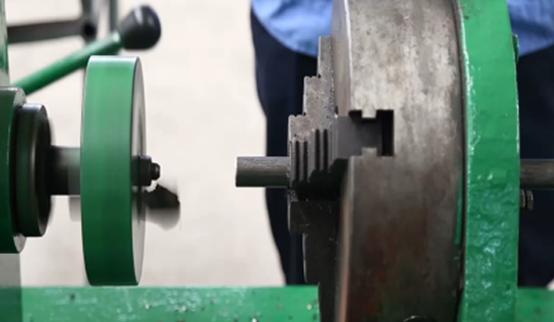 Afrikaans
Afrikaans  Albanian
Albanian  Amharic
Amharic  Arabic
Arabic  Armenian
Armenian  Azerbaijani
Azerbaijani  Basque
Basque  Belarusian
Belarusian  Bengali
Bengali  Bosnian
Bosnian  Bulgarian
Bulgarian  Catalan
Catalan  Cebuano
Cebuano  Corsican
Corsican  Croatian
Croatian  Czech
Czech  Danish
Danish  Dutch
Dutch  English
English  Esperanto
Esperanto  Estonian
Estonian  Finnish
Finnish  French
French  Frisian
Frisian  Galician
Galician  Georgian
Georgian  German
German  Greek
Greek  Gujarati
Gujarati  Haitian Creole
Haitian Creole  hausa
hausa  hawaiian
hawaiian  Hebrew
Hebrew  Hindi
Hindi  Miao
Miao  Hungarian
Hungarian  Icelandic
Icelandic  igbo
igbo  Indonesian
Indonesian  irish
irish  Italian
Italian  Japanese
Japanese  Javanese
Javanese  Kannada
Kannada  kazakh
kazakh  Khmer
Khmer  Rwandese
Rwandese  Korean
Korean  Kurdish
Kurdish  Kyrgyz
Kyrgyz  Lao
Lao  Latin
Latin  Latvian
Latvian  Lithuanian
Lithuanian  Luxembourgish
Luxembourgish  Macedonian
Macedonian  Malgashi
Malgashi  Malay
Malay  Malayalam
Malayalam  Maltese
Maltese  Maori
Maori  Marathi
Marathi  Mongolian
Mongolian  Myanmar
Myanmar  Nepali
Nepali  Norwegian
Norwegian  Norwegian
Norwegian  Occitan
Occitan  Pashto
Pashto  Persian
Persian  Polish
Polish  Portuguese
Portuguese  Punjabi
Punjabi  Romanian
Romanian  Russian
Russian  Samoan
Samoan  Scottish Gaelic
Scottish Gaelic  Serbian
Serbian  Sesotho
Sesotho  Shona
Shona  Sindhi
Sindhi  Sinhala
Sinhala  Slovak
Slovak  Slovenian
Slovenian  Somali
Somali  Spanish
Spanish  Sundanese
Sundanese  Swahili
Swahili  Swedish
Swedish  Tagalog
Tagalog  Tajik
Tajik  Tamil
Tamil  Tatar
Tatar  Telugu
Telugu  Thai
Thai  Turkish
Turkish  Turkmen
Turkmen  Ukrainian
Ukrainian  Urdu
Urdu  Uighur
Uighur  Uzbek
Uzbek  Vietnamese
Vietnamese  Welsh
Welsh  Bantu
Bantu  Yiddish
Yiddish  Yoruba
Yoruba  Zulu
Zulu Understanding the Mechanics of Belt and Pulley Systems in Engineering Applications
Understanding Belt and Pulley Drives
Belt and pulley drives are a fundamental mechanical system utilized in various machines and applications to transmit power and motion. This system consists of a belt, typically made of flexible and durable materials, that wraps around two or more pulleys. The simplicity and efficiency of this mechanism make it a popular choice in industrial and automotive applications alike.
How Belt and Pulley Systems Work
The basic principle behind a belt and pulley drive is the transfer of rotational motion from a power source, such as an electric motor, to a driven component. The motor drives the first pulley, which in turn moves the belt. The motion of the belt then rotates the second pulley, effectively transmitting power throughout the system.
Belt and pulley drives can operate in various configurations. The most common are open drives, where the belt runs in a continuous loop between two pulleys, and crossed drives, where the belt crosses over itself between the pulleys. The choice between these configurations depends on the specific requirements of the application, including the direction of rotation and the available space.
Advantages of Belt and Pulley Drives
belt and pulley drive

One of the significant benefits of using belt and pulley drives is their ability to absorb shock loads. The flexibility of the belt allows it to stretch slightly under sudden changes in load, reducing the strain on the motor and associated components. Additionally, these systems are generally quieter than gear drives, making them suitable for applications where noise reduction is essential.
Maintenance is another area where belt and pulley systems excel. They typically require less upkeep compared to more complex transmission systems. Regular checks for belt wear and tension can ensure a long service life and optimal performance. Replacement of a worn belt is generally straightforward, making it a cost-effective solution in the long term.
Applications of Belt and Pulley Drives
Belt and pulley drives are found in a wide array of applications. They are commonly used in automotive engines to connect the crankshaft to various accessories, such as alternators and water pumps. In industrial settings, these systems can power conveyor belts, fans, and pumps. Their versatility extends into household appliances, where they drive washing machines and food processors.
Conclusion
In summary, belt and pulley drives are a vital component of many mechanical systems, offering a reliable and efficient means of power transmission. Their simplicity, ease of maintenance, and shock-absorbing capabilities make them an ideal choice for various applications across different industries. As technology continues to evolve, the design and materials used in belt and pulley systems are likely to improve, further enhancing their performance and longevity. Understanding the principles and applications of belt and pulley drives can help engineers and technicians make informed decisions when designing or maintaining machinery, ensuring optimal efficiency and functionality.
-
Revolutionizing Conveyor Reliability with Advanced Rubber Lagging PulleysNewsJul.22,2025
-
Powering Precision and Durability with Expert Manufacturers of Conveyor ComponentsNewsJul.22,2025
-
Optimizing Conveyor Systems with Advanced Conveyor AccessoriesNewsJul.22,2025
-
Maximize Conveyor Efficiency with Quality Conveyor Idler PulleysNewsJul.22,2025
-
Future-Proof Your Conveyor System with High-Performance Polyurethane RollerNewsJul.22,2025
-
Driving Efficiency Forward with Quality Idlers and RollersNewsJul.22,2025





























